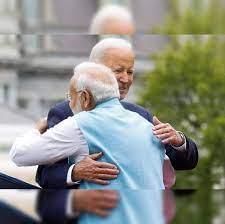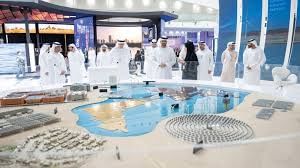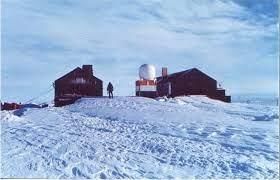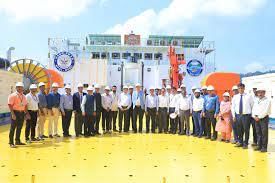UPSC Daily Current Affairs- 19th April 2024 | Current Affairs & Hindu Analysis: Daily, Weekly & Monthly PDF Download
GS-I
Bhojshala-Kamal Maula Complex Dispute
Subject: Arts & Culture
Source: Hindustan Times

Why in News?
The Supreme Court has issued a warning to the Archaeological Survey of India (ASI), advising against any excavation that might change the nature of the Bhojshala-Kamal Maula Complex.
About Bhojshala Complex
Details
- Location: Situated in Dhar district, Madhya Pradesh.
- Historical Background: Founded during the 11th century by Raja Bhoj, a prominent ruler of the Parmar dynasty, originally serving as an educational institution.
- Date of Establishment: Established in the 11th century.
- Transformation: Initially constructed as the Goddess Wagdevi temple (dedicated to Saraswati), later converted into the Kamal Maulana Mosque during the rule of Muslim rulers.
Architectural Features
- Spacious open courtyard (Mahaāyata).
- Verandah adorned with ornate pillars (Sthāpanā).
- Prayer hall featuring intricately carved ceilings (Shikharākāra).
Inscriptions
- Two hymns depicting the Karmavatar of Vishnu (Avatār).
- Pillar inscriptions showcasing Sanskrit alphabets and grammatical rules (Vyākaraṇa).
- Archaeological Significance: Recognized and safeguarded by the Archaeological Survey of India (ASI) as an 11th-century monument under the Archaeological Sites and Remains Act, 1958.
Controversy over Bhojshala Complex
- Religious Claims: Hindus regard the site as the temple of Goddess Wagdevi (Saraswati), while Muslims believe it to be the Kamal Maula mosque.
- Usage Agreement: The Archaeological Survey of India (ASI) allows Hindus to pray on Tuesdays and Vasant Panchami, and Muslims to offer namaz on Fridays.
Recent Developments
- Vasant Panchami Dispute: A recent order allowing Hindus to worship during Basant Panchami hours led to discontent among some Right-wing activists.
- Demand for Extended Access: Hindu groups demand all-day access to the shrine on such occasions, leading to protests and petitions filed in the High Court.
Mount Ruang in Indonesia Erupts
Subject: Enviro & Biodiversity
Source: Times of India

Why in News?
Indonesia experienced a sequence of volcanic eruptions originating from Mount Ruang, a stratovolcano situated in North Sulawesi Province.
About Mount Ruang
- Ruang is located within the Sangihe Islands arc in North Sulawesi, Indonesia.
- It consists of an island measuring 4 by 5 kilometers, featuring a summit with a partial lava dome reaching an elevation of 725 meters (2,379 ft).
- From its peak, one can see neighboring peaks like Klabat, Siau, and Ternate to the south, north, and east respectively.
- The volcano's initial documented eruption occurred in 1808.
Why so many volcanic eruptions in Indonesia this year?
- Indonesia, an archipelago of 270 million people, has 120 active volcanoes.
- It is prone to volcanic activity because it sits along the “Ring of Fire,” a horseshoe-shaped series of seismic fault lines around the Pacific Ocean.
What is the Pacific ‘Ring of Fire’?
- The Pacific 'Ring of Fire', also known as the Pacific Rim or the Circum-Pacific Belt, is a region bordering the Pacific Ocean known for its active volcanoes and frequent seismic activity.
- This area, termed the Ring of Fire, is defined by volcanic arcs and oceanic trenches that partially encircle the Pacific Basin.
- Approximately 75 percent of the world's volcanoes, totaling over 450, are located within this region.
- Moreover, about 90 percent of the world's earthquakes occur here.
Its spread
- Its length is over 40,000 kilometres and traces from New Zealand clockwise in an almost circular arc covering Tonga, Kermadec Islands, Indonesia.
- It is moving up to the Philippines, Japan, and stretching eastward to the Aleutian Islands, then southward along the western coast of North America and South America.
Seismic activity of the region
- The region spans several tectonic plates, including the Pacific, Philippine, Juan de Fuca, Cocos, Nazca, and North American plates.
- The movement or tectonic activity of these plates results in frequent earthquakes and tsunamis in the area annually.
- Across many parts of the Ring, tectonic plates converge, leading to the formation of subduction zones.
GS-II
How India-US Settled WTO Disputes
Subject: Economic
Source: The Economic Times

Why in News?
- US Trade Representative highlighted that sorting out World Trade Organisation (WTO) disputes with India is a win for the agriculture and rural communities in the US.
- However, she raised some concerns on India’s wheat subsidies allegedly hurting American farmers.
How India-US Settled WTO Disputes?
- The discussions on bilateral settlement of pending WTO disputes between both sides began during the annual Trade Policy Forum (TPF) meeting between both countries in January 2023.
- The TPF aims to resolve trade and investment issues between both nations.
- Since these outstanding disputes were areas where both countries have had some wins and some losses, both countries have directed their officials to engage ‘aggressively’ on the matter.
- Thereafter (in June 2023), both sides decided to close half-a-dozen outstanding disputes at the WTO including the retaliatory tariffs India imposed on imports of some farm products from the US.
- The six disputes included:
- India’s appeal against the US's imposition of tariffs on imports of steel and aluminium products from India;
- The US appeal against India’s retaliatory tariffs;
- India’s renewable energy subsidies for solar cells and modules under Jawaharlal Nehru National Solar Mission;
- India’s appeal over similar subsidies for solar cells and solar modules by eight US state governments;
- The US appeal against India’s export subsidy programmes;
- India's imposition of countervailing duties on imports of certain hot-rolled carbon steel flat products from the US.
- The last dispute between the two, which was settled in September 2023, was on poultry import from Washington as part of which India agreed to cut import duties on some farm items.
Impact of Settling WTO Disputes on Indian and US Economy
- The US was India’s largest trading partner in 2022-23 with bilateral trade rising 7.65% to $128.55 billion.
- Settling of disputes means improved access for chickpeas, lentils, almonds, walnuts, and apples benefiting farmers across the country.
- India agreeing to reduce tariffs on several US products means more market access for turkey, duck, blueberries, and cranberries benefiting farmers in the US.
Case of India’s Wheat Subsidies and India’s Take on This
- According to the USTR, India’s wheat subsidies are distorting prices and making it harder for the USA’s farmers to compete in the Asian market.
- In discussions around its wheat subsidies under the MSP programme at the WTO, India has been maintaining that -
- Its subsidies were well within the range prescribed by the WTO, and
- Its food security programmes were necessary to support vulnerable farmers and feed the poor.
World Future Energy Summit 2024
Subject: International Relations

Why in the news?
A panel conversation titled "Exploring Future Growth Prospects for Extended Energy Storage" took place at the 2024 World Future Energy Summit in Abu Dhabi.
About World Future Energy Summit (WFES)
- The World Future Energy Summit (WFES) is an annual gathering hosted in Abu Dhabi, United Arab Emirates, with the objective of promoting future energy, energy efficiency, and clean technologies.
- Commencing in 2008, the event was initiated under the patronage of Sheikh Mohammed Bin Zayed Al Nahyan, Crown Prince of Abu Dhabi.
- Edelman, a public relations firm, played a role in its establishment to enhance the UAE's environmental reputation.
- It was created as a forum to tackle the increasing demand for renewable energy solutions and sustainable development in addressing worldwide energy issues.
Key Initiative: Young Future Energy Leaders
- The Young Future Energy Leaders (YFEL) is an element of the annual World Future Energy Summit (WFES).
- A program of the Masdar Institute, it is committed to raising awareness and engaging students and young professionals in the fields of renewable energy and sustainability.
India’s New Post Office in Antarctica
Subject: Geography
Source: IE

Why in News?
- The Department of Posts recently inaugurated a second post office at the Bharati research station in Antarctica after nearly four decades.
- This new branch introduces an experimental PIN code, MH-1718, specifically designated for the post office.
- Presently, India operates two active research stations in Antarctica: Maitri and Bharati.
Significance of India's Post Office in Antarctica
Historical Context:
- In 1984, India established its first post office in Antarctica at Dakshin Gangotri, its initial research station.
- However, Dakshin Gangotri was submerged in ice in 1988-89, leading to its decommissioning.
Continuing the Tradition:
- India set up another post office at the Maitri research station on January 26, 1990.
- Despite being 3,000 km apart, both Maitri and Bharati research bases come under the Goa postal division.
Operational Process:
- Letters addressed to Antarctica are initially sent to the National Centre for Polar and Ocean Research (NCPOR) in Goa.
- During scientific expeditions to Antarctica, researchers transport these letters, which are then processed at the research base.
Strategic Presence:
- The presence of an Indian post office in Antarctica holds strategic importance, symbolizing India's commitment to scientific exploration and environmental stewardship.
- This establishment also aligns with the spirit of the Antarctic Treaty, which emphasizes peaceful scientific cooperation.
India's Antarctic Programme
About
- India's scientific research and exploration program in Antarctica are managed by the National Centre for Antarctic and Ocean Research (NCPOR), initiated in 1981.
- NCPOR was established in 1998 to oversee these endeavors.
Dakshin Gangotri and Maitri
- Dakshin Gangotri was India's first scientific research base in Antarctica but was submerged in ice in 1988-89.
- Maitri, India's second permanent research station, commenced operations in 1989 and is situated in the Schirmacher Oasis.
Bharati Research Station
- Bharati, India's latest research facility operational since 2012, is designed to ensure researchers' safety in extreme weather conditions.
- Located approximately 3000 km east of Maitri, it represents India's continued commitment to Antarctic exploration.
Other Research Facilities
Sagar Nidhi
- In 2008, India launched the Sagar Nidhi, an ice-class vessel commissioned by the National Institute of Ocean Technology (NIOT).
- This vessel has facilitated various research activities, including the launch and retrieval of remotely operable vehicles (ROV) and deep-sea mining systems.
Antarctic Treaty System
About
- The Antarctic Treaty System encompasses a set of agreements aimed at regulating international relations in Antarctica.
- Its primary objective is to ensure Antarctica remains a peaceful and scientific domain, free from international discord.
Challenges
- Despite its success in addressing various challenges, the Antarctic Treaty faces new complexities in the modern era, including increased accessibility and heightened global interest.
- Issues such as resource scarcity and environmental degradation require enhanced attention and collaboration among treaty signatories.
Major International Agreements
- The Antarctic Treaty System comprises several key agreements, including the 1959 Antarctic Treaty, 1972 Convention for the Conservation of Antarctic Seals, 1980 Convention on the Conservation of Antarctic Marine Living Resources, and the 1991 Protocol on Environmental Protection to the Antarctic Treaty.
GS-III
Why have private investments dropped?
Subject: Economics
Source: The Hindu

Why in the news?
One of the significant challenges facing the Indian economy has been the sluggish growth of private investment, indicated by the private Gross Fixed Capital Formation (GFCF) as a proportion of gross domestic product (GDP) at current prices.
What is GFCF?
- GFCF refers to the growth in the size of fixed capital in an economy.
- Fixed capital refers to things such as buildings and machinery, for instance, which require investment to be created.
- So private GFCF can serve as a rough indicator of how much the private sector in an economy is willing to invest.
- Overall GFCF also includes capital formation as a result of investment by the government.
Why does it matter?
- GFCF matters because fixed capital, by helping workers produce a greater amount of goods and services each year, helps to boost economic growth and improve living standards.
- In other words, fixed capital is what largely determines the overall output of an economy.
What is the trend seen in private investment in India?
- Pre-liberalization (1950s to early 1990s): Private investment remained relatively stable, hovering around or slightly above 10% of GDP. Public investment, however, steadily increased during this period.
- Liberalization (early 1990s onwards): Economic reforms in the early 1990s improved private sector confidence, leading to a significant uptick in private investment. Public investment, although still significant, began to decline relative to private investment.
- Post-global financial crisis (late 2000s to present): Private investment continued to grow until the global financial crisis of 2007-08, reaching around 27% of GDP. However, from around 2011-12 onwards, private investment began to decline, hitting a low of 19.6% of GDP in 2020-21.
Why has private investment fallen?
- Low private consumption expenditure: Some economists attribute the decline in private investment to low private consumption expenditure. They argue that businesses need confidence in future demand to invest in fixed capital, and boosting consumption expenditure can help stimulate private investment.
- Structural problems and policy uncertainty: Other economists argue that structural issues and policy uncertainty are core reasons behind the fall in private investment. They point to unfavourable government policies and policy uncertainty as major factors affecting private investment.
Conclusion
To address the decline in private investment, India needs policies promoting consumer confidence and stable, conducive business environments. Balancing pro-growth fiscal measures with structural reforms can stimulate investment, fostering economic growth and prosperity.
SPACE Testing & Evaluation hub for Sonar Systems
Subject: Science Technology

Why in the news?
DRDO inaugurated a cutting-edge SPACE testing and evaluation center tailored for sonar systems, specifically for the Indian Navy.
About Submersible Platform for Acoustic Characterisation and Evaluation (SPACE)
- The SPACE facility is situated at the Underwater Acoustic Research Facility in Kulamavu, Idukki, Kerala.
- It was created by the Naval Physical & Oceanographic Laboratory of DRDO.
- This center is poised to emerge as a leading site for testing and assessing sonar systems used across a range of Indian Navy vessels, such as ships, submarines, and helicopters.
Key Features of SPACE
- SPACE comprises two distinct components:
- Floating Platform on the water surface and
- Submersible platform capable of descending to depths of up to 100 meters using winch systems.
- After completing operations, the submersible platform can be winched up and docked with the floating platform, ensuring efficient utilization of resources.
Functions and Capabilities
- The primary function of SPACE is the evaluation of complete sonar systems, facilitating rapid deployment and retrieval of scientific packages such as sensors and transducers.
- It will serve for surveying, sampling, and data collection of air, surface, mid-water, and reservoir floor parameters utilizing modern scientific instrumentation.
- It will address the data processing and sample analysis requirements, ushering in a new era of Anti-Submarine Warfare research capabilities.
|
63 videos|5408 docs|1146 tests
|
















